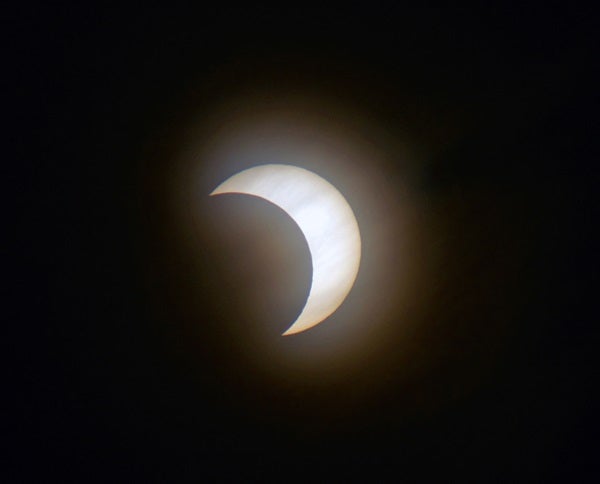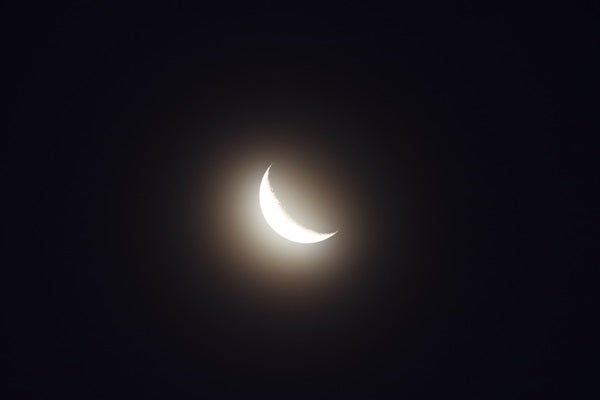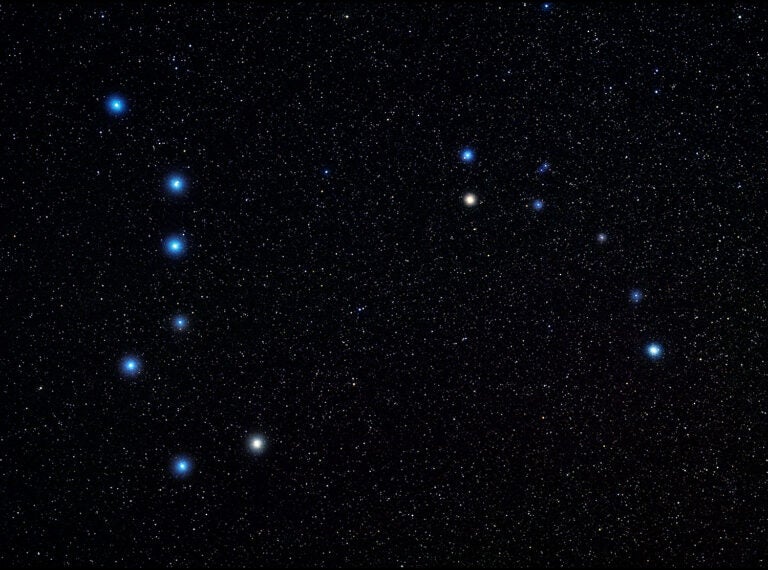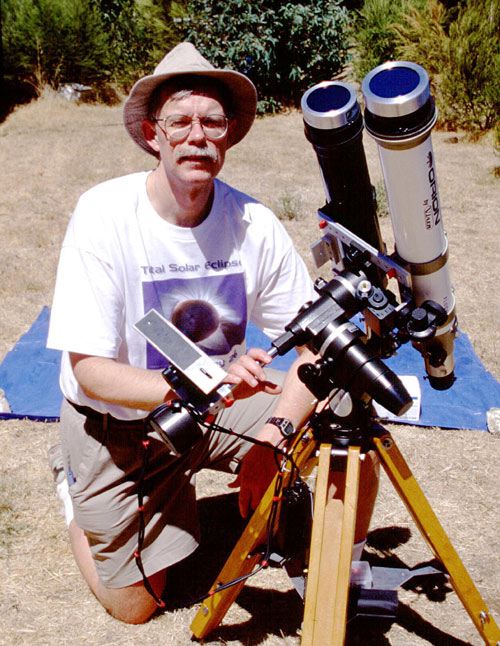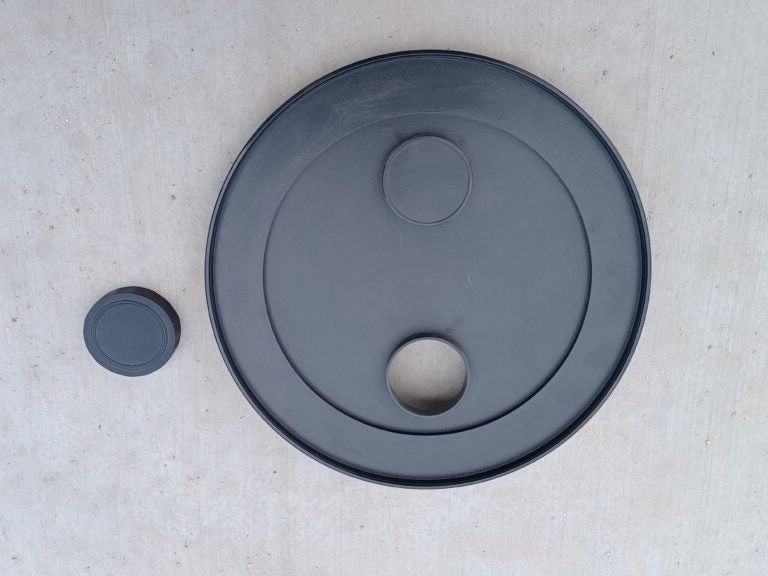Don’t be fooled by the title of this article! It does concern a recent solar eclipse, but not a total one. The Sun’s corona — the crown of plasma that makes up its outermost layer — was not even visible.
Still, an atmospheric corona was. This visual phenomenon seen around the Sun is produced by small water droplets that diffract sunlight or moonlight.
The feature appeared during the June 10, 2021, solar eclipse, which was partial over New England. On that morning, Harvard University astronomer Dan Green traveled to Duxbury Beach, 35 miles (56 kilometers) southeast of Boston, to view and photograph the spectacle over the Atlantic Ocean. The Sun was due to rise out of the sea with the Moon already covering it.
“When we arrived at the beach a half-hour before sunrise,” Green said, “we saw that there was a [distant] thick cloud layer (all high-altitude clouds) low over the ocean, and unfortunately they continued to increase as time progressed. I tried but was unable to image the Sun around sunrise (5:08 a.m. EDT) due to the thickness of the clouds.”
Because maximum eclipse (73 percent) was set to occur just 30 minutes after sunrise, with the Sun only 3.5° above the horizon, the situation was uncertain. But about 15 minutes after sunrise, Green reported, “the Sun gradually broke through openings in the clouds” as it rose. He captured the photo shown above near the time of maximum eclipse “through thin, diffuse” clouds.
While it was disappointing to have clouds throughout the event, Green nonetheless captured a beautiful aureole — the corona in its simplest form — around the solar crescent. Note the aureole’s aqua disk, which fades to reddish-brown toward the edge.
Strictly speaking, in a full corona, the aureole is surrounded by concentric rings, which were absent here. Nevertheless, the event shows how less-than-perfect eclipse conditions can create an uncommon display of ethereal beauty when the Sun, Moon, and Earth’s atmosphere work together.
Casual observers most commonly observe aureole around the Full Moon, when the feature is brightest and appears circular. But in this case, the aureole appeared largely elliptical around the crescent Sun. The most fascinating feature Green captured is a distinct bay or notch in the aureole on the side of the occulting Moon, giving the aureole a slight crescent shape.
This feature is subtle and difficult to capture — especially visually. It is hardly ever reported, perhaps because seeing it requires spending time studying the phenomenon (with direct and averted vision) to make out the notch. The aureole is mirroring the fact that the crescent Sun is longer on the north-south axis and shorter on the east-west axis. Note, too, that the aureole is centered not on the solar disk but on the illuminating source: the solar crescent.
The intensity and size of an aureole depends on the brightness of the illuminating source and the size of the atmospheric particles (whether they be water droplets or needlelike ice crystals). As a general rule, the brighter the illuminating source, the more pronounced the aureole. Also, the smaller the particles, the larger the aureole, and the more color and definition it possesses. This also explains why the edge of the aureole appears red, because aureoles created from long-wavelength red light are larger than those created from short-wavelength blue light.
The aureole in Green’s image is very small — about 20′ in radius. The smallest on record is about 10′, indicating that the particles in the cloud creating it were quite large.
Of course, we don’t have to wait for an eclipse to see the crescent corona, as it can also occur with any waxing or waning crescent Moon. So why not challenge yourself to spot your own crescent corona? As always, send your thoughts and observations of curious phenomena to sjomeara31@gmail.com.

